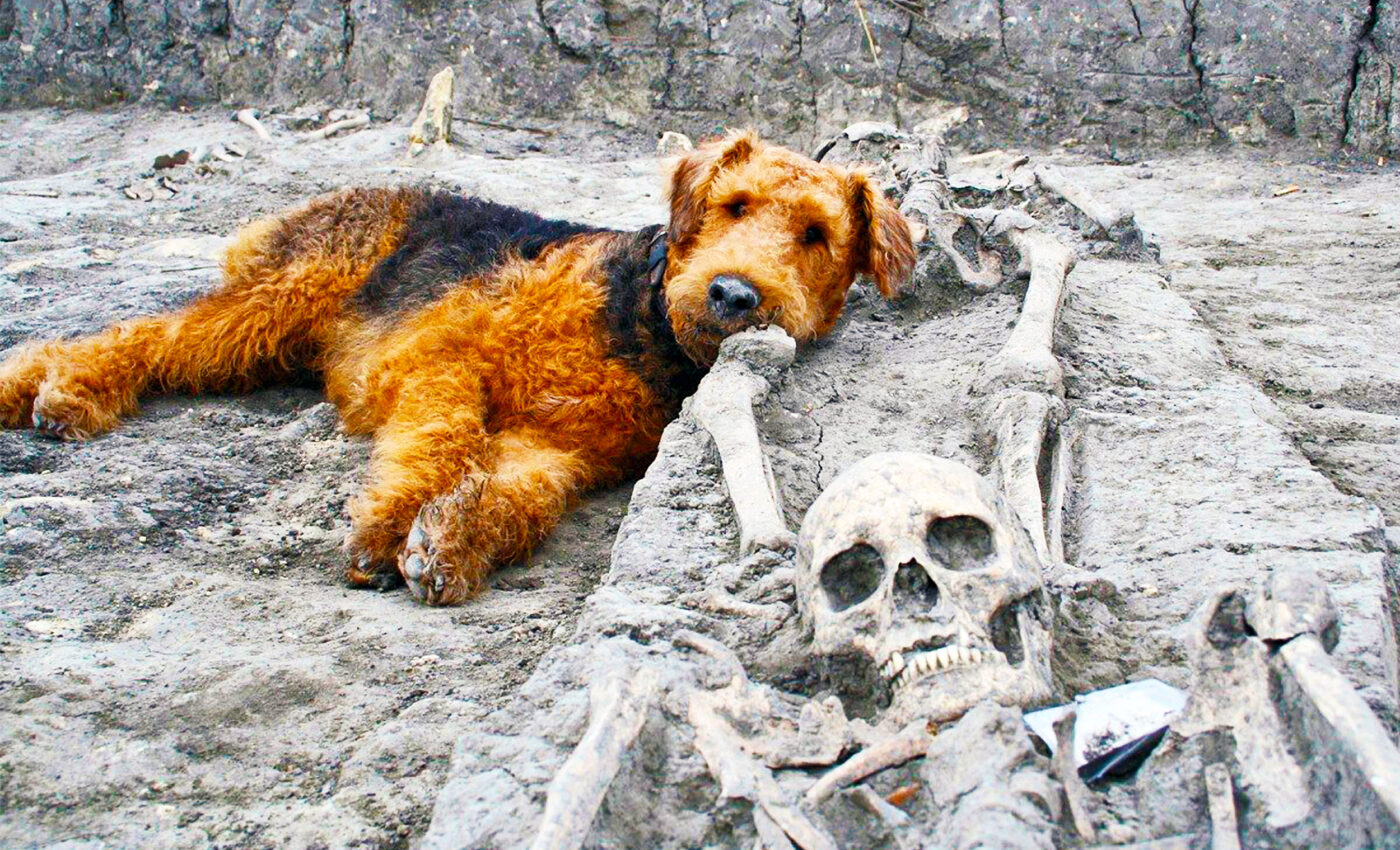
Early humans were often buried with dogs, horses and other animals
In an intriguing discovery from an ancient community in northern Italy, researchers have unearthed burial sites that blend human and animal remains.
This recent excavation spawns more questions than answers regarding the perplexing and complex relationships between humans and animals that lived thousands of years ago.
Together, the team explored the burial practices at Seminario Vescovile in Verona, dating back to the 3rd to 1st century BCE.
Significance of human burials with animals
Out of 161 individuals buried at this site, 16 were found alongside animal remains, including dogs, horses, pigs, a chicken, and part of a cow.
While some of these animals, like pigs and chickens, might have been food offerings for the deceased, the presence of dog and horse remains suggests a different story.
These animals, not typically consumed by the community, might have symbolized enduring companionship or held religious significance, reflecting sacrificial practices.
Decoding these human-animal burial connections
The researchers meticulously analyzed demographic, dietary, genetic, and burial data of both the humans and animals found at the site, hoping to uncover patterns that could explain these unique burials.
Interestingly, no significant correlations emerged from their analysis. Those buried with animals did not share close familial ties, suggesting that this practice was not limited to a specific family lineage.
Among the burials, there was a diverse representation of individuals accompanied by animals.
The graves included a baby buried with a complete dog skeleton, a young man with horse parts, a middle-aged man with a small dog, and a middle-aged woman with an entire horse, additional horse parts, and a dog skull.
This variety further complicates our understanding of the motivations behind these burials.
Interpreting silence: Mystery of human-animal burials
The absence of clear patterns in these burials leaves room for multiple interpretations. While dogs and horses often carried religious symbolism in ancient cultures, it’s also plausible that these animals were beloved companions of the deceased.
The researchers propose that these burial practices likely resulted from a combination of individual preferences and broader societal customs.
This study is a part of the CELTUDALPS research project, which aims to uncover the mysteries surrounding the burial of horses and dogs with humans.
It opens up fascinating possibilities about the rituals and beliefs of late-century BCE Italy, suggesting that the relationship between humans and animals was both complex and multifaceted.
As we delve deeper into these ancient practices, we gain valuable insights into the social and religious fabric of past civilizations, highlighting the enduring bond between humans and their animal counterparts.
Exploring Pre-Roman burial rituals
Long before the rise of the Roman Empire, ancient cultures across Europe and the Mediterranean engaged in diverse burial rituals that reflected their beliefs, values, and social structures.
These practices, varying widely among different communities, offer us a window into the lives and afterlives of pre-Roman societies.
Communal tombs and individual graves
One common practice involved communal burial sites, where generations of a single community or family rested together. These large tombs, often built with stone or carved into the earth, symbolized a collective identity and continuity.
In contrast, individual graves highlighted personal status, achievements, or roles within the community, marked by distinctive grave goods, ornaments, or symbols.
Rituals of passage
Burial rituals often served as rites of passage, guiding the deceased from the world of the living to the afterlife. Ceremonies could include processions, chants, and offerings, with the belief that these rites ensured a safe journey for the soul.
The inclusion of personal items, from weapons and jewelry to everyday utensils, aimed to equip the deceased for the afterlife. In addition, as we learned above, animals would often be included in the burial rituals.
Cremation and inhumation
Pre-Roman societies practiced both cremation and inhumation, with preferences varying over time and geography.
Cremation involved burning the body, then burying the ashes in urns or pits, sometimes accompanied by offerings.
Inhumation, the direct burial of the body, often included elaborate grave goods and sometimes sacrificial animals, believed to serve or protect the deceased in the next world.
Symbolism and belief
The diversity in burial practices reflected a tapestry of beliefs about death, the afterlife, and the cosmos. Some gravesites were aligned with celestial bodies or placed in locations believed to be closer to the divine.
Animals, when included, could symbolize protection, companionship, or status. The variety and complexity of these rituals underscored the significance of death and the afterlife in pre-Roman cultures.
Unearthing connections
Archaeological excavations continue to unearth the remnants of these ancient practices, offering insights into the spiritual and cultural worlds of pre-Roman societies.
Each discovery, from the simplest burial pit to the most elaborate tomb, reveals the universal quest for meaning in death and the hope for continuity beyond it.
In summary, through the lens of burial rituals, we glimpse the profound connections between the living and the dead, the individual and the community, and humans and the cosmos in pre-Roman times.
These ancient practices commemorated the deceased while also reaffirming the values and beliefs of the living, leaving a lasting legacy that continues to fascinate and inform.
The research at Seminario Vescovile in Verona was conducted by Zita Laffranchi from the University of Bern, Stefania Zingale from the Institute for Mummy Studies at Eurac Research Bozen, Umberto Tecchiati from the University of Milan, and their colleagues.
The full study was published in the journal PLoS ONE.
—–
Like what you read? Subscribe to our newsletter for engaging articles, exclusive content, and the latest updates.
—–
Check us out on EarthSnap, a free app brought to you by Eric Ralls and Earth.com.
—–













